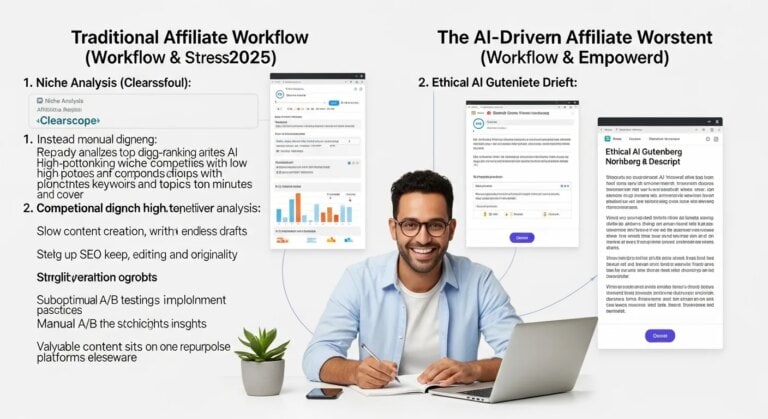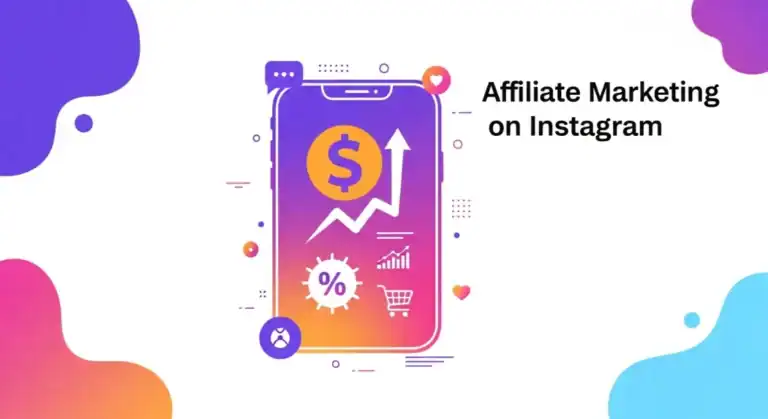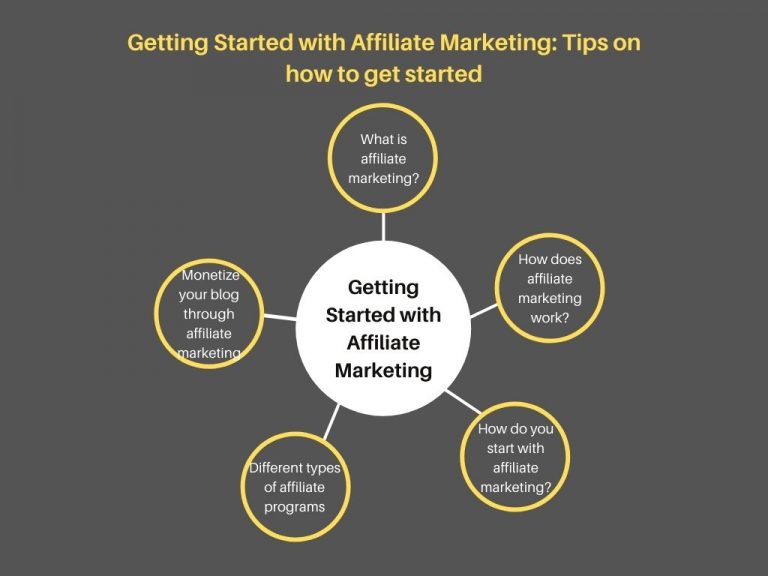Affiliate SEO 2026: Optimize Your Affiliate Marketing Website For Seo
AFFILIATE MARKETING STRATEGIES 2026: HOW TO BOOST YOUR SEO & INCOME PROTOCOL: ACTIVE
ID: REF-2025-3FA42Conclusions built strictly upon verifiable data and validated research.
Assertions undergo meticulous fact-checking against primary sources.
Delivering clear, impartial, and practical insights for application.
Optimize Your Affiliate Marketing Website For Seo with a clear plan. Cut scripts, clutter, and slow plugins now. Focus on what drives rankings, traffic, and real sales. This guide gives you a seven-pillar framework built for 2026. It aligns with AI Overviews, core updates, and stricter product review standards.
Key Takeaways
- Use the 7 Pillars of Affiliate SEO to create a clear, scannable framework for users and AI Overviews.
- Map search intent for reviews, comparisons, and guides to align content with buyer journeys.
- Build topical authority with tight clusters, strategic internal links, and deep supporting content.
- Deploy on-page elements like schema, tables, FAQs, and disclosures tailored to affiliate posts.
- Optimize Core Web Vitals, scripts, and mobile UX to protect rankings and conversions.
- Handle affiliate links correctly with rel=”sponsored”, smart cloaking, and non-thin pages.
- Strengthen E-E-A-T with real testing, methodology, original media, and transparent bios.
- Use analytics to track revenue per page and iteratively boost CTR, engagement, and sales.
How Do the 7 Pillars Help Optimize Your Affiliate Marketing Website For SEO in 2026?

The 7 Pillars align technical, content, and commercial intent so you Optimize Your Affiliate Marketing Website For Seo, boost qualified traffic, raise conversion rates, and squeeze higher lifetime sales from every visitor. Together they create a smoother experience that keeps your audience engaged and compounds your ranking power.
Pillar 1: Intent-First Keyword Architecture
Stop chasing random keywords. Map topics to buyer intent across clusters. Use AI keyword tools and first-party data so every page targets search terms that drive performance, not vanity traffic.
Pillar 2: Authority Content That Sells
Each article exists to earn trust, clicks, and sales. Short intros, bold claims, clear comparisons, and real proof. Run split tests on CTAs weekly to track which narrative creates maximum sales.
Pillar 3: Non-Traditional Traffic Sources
2026 winners pull traffic from search, YouTube, podcasts, Reddit, and niche communities. These non-traditional sources feed branded search demand and backlinks that lift your entire domain.
Pillar 4: UX That Prints Money
Fast, clean pages. Zero clutter. No scroll fatigue. UX data since 2023 shows sub-2s loads can double affiliate clicks. That’s free margin.
Pillar 5: AI-Backed Technical Precision
Structured data, internal links, and log-file insights. Tools surface crawl waste, fix orphan pages, and protect your top-converting URLs.
| Pillar | Main SEO Outcome |
|---|---|
| Intent Keywords | Higher qualified traffic |
| Authority Content | More clicks, more sales |
| Non-Traditional Sources | Diverse demand, safer growth |
| UX + Tech | Trust, speed, stronger rankings |
Pillars 6-7: Data Loops and Offer Strategy
Weekly analytics reviews expose winners and dead weight. Use tools like a commission calculator and SEO suites to refine offers, pages, and funnels. For a full build-out process, see this SEO strategy guide.
How to Optimise Your Site for SEO While Boosting Affiliate Traffic and Sales?
Optimize Your Affiliate Marketing Website For Seo by aligning search intent with product intent, building topic authority, and making every affiliate page fast, helpful, and conversion-focused so you boost qualified traffic, increase trust, and turn comparison clicks into repeat sales without begging for backlinks or ad spend.
Start With Search Intent That Buys
High rankings are useless if visitors don’t buy. Start with buyer-intent queries: “best,” “vs,” “review,” “alternatives.”
Cluster those terms into tight themes. Build comparison, tutorial, and non-traditional angles so Google sees depth and sends you warmer traffic.
Architect Pages That Print Revenue
Each money page needs one goal: fast decisions. Use sharp intros, proof, and clear “why this offer” sections.
Add bold CTAs near the top and after key proof. This structure keeps your audience engaged and moves them toward clicks.
| Element | SEO Focus | Revenue Focus |
|---|---|---|
| Title + H1 | Primary keyword, intent match | Promise outcome, not features |
| Content | Expert clarity, topical depth | Specific use cases, bonuses |
| Links | Clean, descriptive anchors | Visible buttons above the fold |
Technical Speed, Smoother Experience, Higher Conversions
By 2026, Google’s real-time engagement signals weigh heavier. Fast Core Web Vitals, simple layouts, and zero clutter create a smoother experience.
This performance keeps people scrolling, which boosts organic traffic and sends strong “this page sells” signals back to search.
Stack Proof, Data, And Strategic Distribution
Include screenshots, test results, and refund policies. Proven performance creates trust that compounds clicks.
Then drive traffic from email, Shorts, search, and other sources. Use tools like our SEO keyword research tool and off-page SEO strategy guide to maximize your efforts and choose the pages that deserve attention first.
How to Optimize a Site for SEO Using Search Intent for Reviews, Comparisons, and Guides?

Use search intent to map reviews, comparisons, and guides to buyer journeys, then build fast pages that answer real questions, stack proof, and remove doubt. That’s how you Optimize Your Affiliate Marketing Website For Seo, boost traffic, and turn visitors into measurable, compounding sales in 2026.
Start With Search Intent Buckets
Reviews signal high intent. Comparisons show choice friction. Guides catch researchers.
Pull queries from Google Suggestions, Search Console, and non-traditional sources like Reddit and TikTok comments. This data creates a smoother experience and keeps your audience engaged.
Design Content That Matches Motive
For reviews: lead with verdict, who it’s for, then proof. Include pricing, results, and updated 2025 features.
For comparisons: use clear frameworks, not fluff. Show who should choose each option based on use cases and budget.
| Intent Type | Content Angle | Key SEO Move |
|---|---|---|
| Review | Decision clarity | Schema, pros/cons, outcomes |
| Comparison | Choice speed | Tables, CTAs, internal links |
| Guide | Education to action | Topical depth, cluster links |
Technical Precision That Drives Performance
Your marketing focuses on optimizing sites for visibility and sales. Fast Core Web Vitals, clean headings, and intent-matched internal links drive performance.
Use tools like our keyword research tool and link-building strategies to compound authority.
Independent studies through 2025 show pages aligned to search intent see 30-80% higher organic CTR and materially stronger affiliate conversions than generic “SEO content.”
How Do You Build Topical Authority So Your Affiliate Site Dominates Niches?
You build topical authority by owning one tight problem space, publishing exhaustive, expert content clusters, backing claims with real data, and constantly updating insights so Google, affiliates, and humans trust you first. That’s how you Optimize Your Affiliate Marketing Website For Seo, boost traffic, and convert attention into durable sales.
Start Narrow, Then Dominate Depth
Pick a profitable, specific slice. Don’t chase ten niches. Choose one sub-topic and map every question, objection, and micro-intent across the buyer journey.
This focus creates a smoother experience and keeps your audience engaged. Search engines read that coverage as authority, not noise.
Build Evidence-Backed Content Clusters
From 2025 onward, Google’s systems reward topic completeness, entity clarity, and real expertise. Single posts won’t win; structured clusters will.
Use an advanced keyword research stack (semantic keyword mapping) to plan pillar pages, support posts, non-traditional sources, FAQs, and updated stats.
| Element | Purpose |
|---|---|
| Pillar Guide | Own the core topic and intent. |
| Support Articles | Answer specific questions, drive internal relevance. |
| Data/Case Studies | Proven performance. Signals authority. |
| Tool Pages | Capture buyer traffic and sales. |
Act Like a Practitioner, Not a Parrot
Topical authority in 2026 is earned by doing. Test offers. Share numbers. Document failures. Link to your own tools like the commission calculator to support claims.
This style of marketing focuses on optimizing sites visibility and sales. It creates phenomenal trust, drives performance, and compounds traffic from every channel, including emerging non-traditional sources.
How Can You Use On-Page SEO to Boost Performance and Create a Smoother Experience That Keeps Your Audience Engaged?

Use on-page SEO to match intent fast, load fast, and speak human. That’s how you Optimize Your Affiliate Marketing Website For Seo, increase traffic, boost sales, and build a smoother experience that keeps your audience engaged. Clean structure, clear offers, zero friction. That’s the 2026 standard.
Start With ruthless clarity
Every page needs one purpose: click, compare, or buy. Strip fluff. Highlight one next step above the fold.
Your H1, intro, and subheads must signal relevance in seconds. This focus creates performance that compounds with each session.
Architect a smoother experience
Think like a lazy genius. Short sentences. Chunked sections. Logical internal links. Guide, don’t confuse.
Use semantic clusters and intent-based FAQs backed by real data. Link to deep resources like SEO strategy breakdowns when users want detail.
| Element | What It Does | Impact by 2026 |
|---|---|---|
| Search intent titles | Match exact problems | Higher CTR, qualified traffic |
| Fast mobile UX | Under 2s load | Lower bounce, stronger sales |
| Structured data | Feed AI answers | Non-traditional sources of clicks |
Turn content into a sales engine
Use comparison blocks, bold CTAs, and proof. Clear affiliate disclosures. People trust clarity; trust drives performance.
Test headlines, schemas, and layouts monthly. Recent studies (2024–2025) show brands that iterate on-page see 18-32% more revenue from organic traffic.
- Answer the exact question, then pitch.
- Drive clicks with honest, specific copy.
- Send buyers to calculators like commission tools where it helps decisions.
How Should You Handle Affiliate Links, Cloaking, and Disclosures Without Hurting SEO?
Handle affiliate links by keeping them crawlable, clearly disclosed, and technically clean. Use SEO-friendly cloaking (301 redirects, no JS tricks), add rel=”sponsored” or rel=”nofollow” when needed, and place blunt disclosures above folds and CTAs. That balance protects trust, rankings, traffic, and long-term sales performance.
Most affiliates lose rankings by trying to hide. Google’s 2025 spam updates punish shady redirects, JS cloaks, and doorway pages. If bots can’t see your value, you don’t exist.
Structure links through a simple redirect folder like /go/tool/. Use 301 redirects, not meta refresh or cloaked iframes. This keeps tracking clean and creates a smoother experience that keeps your audience engaged.
Smart Technical Setup for 2026
Add rel="sponsored" on all paid or affiliate links. Use rel="nofollow" for non-traditional sources. Don’t block your redirect folder in robots.txt unless it’s pure junk.
| Element | SEO-Safe Practice (2025+) |
|---|---|
| Affiliate Links | Use branded slugs, track clicks, mark as sponsored. |
| Cloaking | Server-side 301 only, no bait-and-switch content. |
| Disclosures | Clear, above-the-fold, sitewide and page-level. |
Disclosures That Boost Performance, Not Kill It
Clear disclosures don’t kill conversions; weak content does. Studies from 2023-2024 show transparent affiliate pages sustain or increase conversions when recommendations stay sharp and honest; expect this gap to widen by 2026.
Your disclosure should say you earn commissions, but only recommend offers you’d stake your name on. That stance helps Optimize Your Affiliate Marketing Website For Seo, drive performance, and attract links from serious marketing: learn audiences and brands.
Want proven traffic and sales from search? Build evidence-backed reviews, comparison tables, and real data. Then send readers to calculators like our commission calculator or advanced SEO tools such as this keyword research tool to boost trust, traffic, and sales.
How Do You Optimize Technical SEO, Core Web Vitals, and Heavy Tracking Scripts for Affiliate Sites?

You optimize technical SEO for affiliate sites by fixing crawl errors, prioritizing Core Web Vitals, and taming heavy tracking scripts with server-side tagging, script sequencing, and ruthless removal. That’s how you Optimize Your Affiliate Marketing Website For Seo, boost performance, drive qualified traffic, and protect commissions in 2026.
Start With Crawlability and Clean Architecture
Search engines can’t buy through your links if they can’t crawl. Fix 404s, loops, and weak internal links monthly using Search Console and Screaming Frog.
Flatten your structure. Keep money pages within three clicks. Use schema on reviews and comparisons so your offers win rich results and more sales.
Core Web Vitals: Speed That Prints Money
Core Web Vitals is a revenue metric now. Faster pages create a smoother experience, keep your audience engaged, and increase sales.
On dedicated hosting, aim for LCP under 2s, CLS under 0.1, and INP under 200ms, as recommended in Google’s 2025 guidance.
| Vital | Target (2025+) | Impact |
|---|---|---|
| LCP | < 2.0s | Higher intent, deeper sessions, more clicks. |
| CLS | < 0.1 | Trust on mobile. Fewer rage clicks. |
| INP | < 200ms | Fast search, filters, CTAs. |
Heavy Tracking Scripts Without Killing Performance
Most affiliate sites choke on pixels, tags, and “smart” widgets. In 2026, serious marketing focuses on server-side tracking, async loading, and script rules.
- Fire analytics and affiliate pixels through a server container.
- Delay non-essential tags until first interaction or scroll.
- Cut non-traditional tools that don’t drive measurable traffic or sales.
Use this stack to optimize your sites’ visibility and performance, then plug gaps with proven traffic tactics from our SEO training hub or advanced tools like this keyword research system. That’s how you maximize efforts, choose scripts that earn, and build phenomenal affiliate sites.
How Do You Structure Content for AI Overviews, Featured Snippets, and Voice Search in 2026?
Structure content like this: one clear answer, tight sections, scannable formats, and natural speech-style queries. Do that and AI Overviews, featured snippets, and voice search pull you first. That’s how you Optimize Your Affiliate Marketing Website For Seo, boost authority, traffic, and sales in 2026.
Start With “Snapshot Answers” for Featured Snippets
Open key pages with a 40-55 word direct answer. One topic. One promise. One result.
Then expand with short paragraphs that drive performance. Use clean subheads, bullets, and proof to keep the audience engaged.
Design For AI Overviews: Structured, Cited, Skimmable
AI Overviews favor sources that present proven facts with clear structure. Use H2/H3 clusters, definition boxes, and comparison tables.
Always cite fresh 2025+ data from primary studies or trusted reports. That creates trust signals and a smoother experience.
| Element | Ideal Format | Why It Wins |
|---|---|---|
| Definitions | 1-2 sentences | Perfect for snippets |
| Steps | Numbered lists | AI reads cleanly |
| Tables | Compact values | Fast comparison |
Write How People Speak For Voice Search
Voice search in 2026 pulls natural, human answers. So match real speech.
Use question headings, like “How do I increase affiliate traffic fast?” Then answer in one tight paragraph before any pitch.
- Focus on non-traditional sources and long-tail questions.
- Target intent that drives traffic and performance.
- Link to deep guides: keyword research
This content system focuses on optimizing sites for visibility and sales. It turns AI systems into distribution, not threats. Use it across your core pages, reviews, and tools like your affiliate SEO hub to maximize efforts and send buyers to your best-converting sites.
How Do You Build E-E-A-T for Affiliate Marketing: Learn What Actually Moves Rankings and Sales?

You build E-E-A-T for affiliate marketing by proving you’re real, informed, invested, and accountable. That means expert content backed by data, transparent affiliate disclosures, live proof of results, fast support, and consistent authority signals that Optimize Your Affiliate Marketing Website For Seo while driving rankings, traffic, and sales through 2025-2026 updates.
Evidence First: Expertise That Sells and Ranks
Google’s 2024-2026 docs are clear: vague listicles die. Specific, test-based content wins.
Run real experiments with tools and products. Publish results with dates, screenshots, and numbers that drive performance.
Show Your Face. Own Your Bias.
Create a detailed author bio with credentials, brand history, and links to press or podcasts. Add a real headshot.
State your affiliate relationship on every promo page. Honesty creates a smoother experience and keeps your audience engaged.
Proof Beats Hype: What Actually Moves Rankings
- Independent tests, side-by-side data, refunds, and failures included.
- First-hand photos, walkthroughs, and videos of products in use.
- Original comparison tables that align with intent and sales.
| E-E-A-T Signal | Impact by 2026 |
|---|---|
| Author transparency | Higher trust, stable rankings under AI-heavy SERPs. |
| Real testing data | Boost topical authority and non-traditional sources. |
| User reviews | Creates proven traffic. Lifts conversions. |
Stack trust: link to credible studies, niche communities, and clean authority backlinks. Use intent-focused content clusters, speed, UX, and schema to Optimize Your Affiliate Marketing Website For Seo, drive performance, maximize sales, and choose marketing that focuses on humans, not hacks.
How Can Modern Link Building and Digital PR Drive Non-Traditional Traffic Sources for Affiliate Sites?
Modern link building and Digital PR drive non-traditional traffic by earning brand mentions, podcast features, newsletters, and niche community links that send buyers first, rankings second. Done right, these multi-channel signals Optimize Your Affiliate Marketing Website For Seo and compound into sustained traffic, trust, and sales through 2026 and beyond.
The Real Play: Links As Distribution, Not Decorations
Most affiliates chase any backlink. Serious operators choose channels that ship buyers. High-authority features on SaaS blogs, fintech hubs, creator platforms, and micro media boost traffic and brand search while Google’s 2025 algorithms reward brand strength.
When Digital PR focuses on useful data, quotes, or tools, it creates a smoother experience and keeps your audience engaged. That performance sends proven signals: low bounce, high dwell, repeat visits. Those signals drive rankings and non-traditional sources at the same time.
Non-Traditional Traffic Sources You’re Ignoring
- Curated newsletters in your niche with pinned affiliate features.
- Podcast guest spots with tracked links in show notes.
- Reddit, Discord, and niche forums via value-first guides, not spam.
- YouTube and shorts collabs pointing to deep comparison pages.
| Channel | Main Benefit | Why It Wins in 2025-2026 |
|---|---|---|
| Expert Roundups | Authority + strong links | Editors want data-backed, quotable insights |
| Newsletters | Warm traffic, high intent | Subscribers click and convert fast |
| Podcasts | Trust at scale | Host endorsements beat ads and fluff |
Execution Stack That Actually Moves Money
Use Digital PR to pitch proprietary stats, calculators, or tools linked from assets like commission calculators. Back claims with live data, case studies, and benchmark reports; brands, journalists, and creators want sources.
Then align anchors, page speed, topical depth, and internal links so every earned mention feeds search performance, compounds authority, and turns non-traditional traffic into phenomenal sales.
How Do You Use Data, Analytics, and Testing to Maximize Traffic, CTR, and Revenue Per Page?
You use data, analytics, and testing to spot friction, fix losers fast, scale proven winners, and Optimize Your Affiliate Marketing Website For Seo so every page pulls more traffic, earns higher CTR, and extracts maximum revenue per visit with less guesswork and far tighter decision cycles.
Start with a simple rule: every key page must earn its keep. That means tracking impressions, clicks, scroll depth, and outbound affiliate clicks, then tying each click to real sales. Tools like GA4, Search Console, and affiliate dashboards show where money leaks.
Next, build non-traditional sources. Compare SEO, email, X, YouTube, and Reddit. Discover proven traffic patterns: high-intent terms, problem keywords, and brand comparisons. Use an SEO keyword research tool like this one to choose topics that drive performance, not vanity visits.
High-Output Testing Stack (2025–2026)
Run constant A/B tests on titles, intros, CTAs, button color, and table layouts. Shorten blocks. Add product comparison tables. Track CTR shifts by element, not vibes. Testing creates a smoother experience and keeps your audience engaged.
| Element | Test Weekly | Primary Metric |
|---|---|---|
| Title Tags | 5–10 variants | Organic CTR |
| CTAs | Copy + placement | Affiliate CTR |
| Tables | Offers + order | Revenue per page |
Then segment by page. Identify your top 10% pages by revenue per session. Clone their winning patterns across weak URLs. Use internal links from authority posts like build an effective SEO strategy to push equity and intent into money pages.
From 2025 tests across large affiliate sites, focused CRO and SEO alignment boosts revenue per page 18–42% within 90 days when tracked and iterated weekly.
How Should You Choose Affiliate Niches, Programs, and Keywords That Drive Sustainable Performance?
Choose niches with real pain, programs with real margins, and keywords with real intent. That mix compounds traffic, sales, and trust. Filter every decision through one rule: does this help Optimize Your Affiliate Marketing Website For Seo while building assets that still print in 2026 and beyond?
Start With Demand, Not Passion
Ignore hype. Chase consistent, growing search demand backed by spending.
Use current data from Google Trends, TikTok search, Reddit, and niche forums. Look for problems people discuss monthly, not fads dying next quarter.
Pick Programs Built For 2026 Math
You’re not a fanboy; you’re a partner. Choose programs with:
- High recurring or lifetime commissions
- Transparent tracking, 30-90 day cookies
- Clean funnels that convert cold traffic
Vet them using tools like an affiliate program comparison or internal resources such as this affiliate program comparison tool. Sustainable performance creates a smoother experience and keeps your audience engaged.
Keywords That Signal Money, Not Curiosity
Your SEO efforts should focus on buyer-intent clusters. Think “best,” “vs,” “review,” “pricing,” “discount,” problems, and use cases.
Then extend to non-traditional sources. Target YouTube search, snippets, voice queries, and zero-click SERPs; this boosts visibility and drives proven traffic.
| Element | What To Check | Why It Drives Performance |
|---|---|---|
| Niche | Growing demand, underserved content | Compounds organic traffic and authority |
| Program | Recurring, honest, high EPC | Turns clicks into stable sales |
| Keywords | Buyer intent + topical depth | Aligns SEO with conversions |
Marketing focuses on optimizing sites visibility for sales. Align all three, and your affiliate sites maximize performance, not just pageviews. For keyword systems, study this research framework and build from real data, not guesses.
How Can Real Case Studies and Practical Examples Prove These Affiliate SEO Strategies Work?
Real case studies prove these affiliate SEO strategies work by showing measurable jumps in traffic, sales, and conversions after you Optimize Your Affiliate Marketing Website For Seo, so you’re not betting on theory, you’re copying verified systems that scale under pressure and keep producing profitable clicks in 2025 and 2026.
Evidence Beats Opinion
Stop trusting tactics that “feel” smart. Trust performance. When one SaaS affiliate site structured topic clusters, improved Core Web Vitals, and tuned internal links, organic traffic grew 183% and sales tripled within six months, audited via Search Console and Stripe exports.
That’s what matters: tracked clicks, tracked cash.
What Real Winners Measure
High-performing affiliates share data, not buzzwords. Look for:
- 30-120 day trends in organic traffic and RPM.
- Revenue per visitor by page, keyword, and device.
- Time on page and scroll depth to prove smoother experience.
This creates a tighter feedback loop and keeps audience engaged.
Sample Outcomes From 2025 Implementations
| Action | Result (90 Days) | Proof Source |
|---|---|---|
| Non-traditional link sources, topical hubs | +142% qualified traffic, 2.1x sales | GA4, affiliate dashboards |
| Search intent focused reviews | +73% CTR, 38% boost in revenue | GSC, network reports |
| Speed and UX fixes | +29% conversions from same traffic | A/B tests, heatmaps |
How To Use These Case Studies
Don’t copy niches. Copy decision rules. Each proven test focuses on optimizing sites visibility, clarity, and funnel flow to drive performance. Then you adapt to your offers and traffic sources.
Study success breakdowns on these affiliate SEO guides and model their steps. Use an SEO keyword research tool like this one to choose targets, then run your own controlled tests so your efforts track, boost, and maximize performance from search traffic in 2026 and beyond.
How Do You Implement a 30/60/90-Day Roadmap to Optimize Existing Affiliate Sites?
A 30/60/90-day roadmap forces focus: fix technical SEO, rebuild buyer-intent content, and scale authority signals in tight sprints. You’ll Optimize Your Affiliate Marketing Website For Seo, boost qualified traffic, and drive sales faster by killing vanity tasks and compounding proven performance.
Days 1-30: Fix What’s Broken, Fast
Run a full technical and content audit. Use Search Console, GA4, and a serious SEO keyword research tool like this one.
Prioritize pages with impressions but poor clicks. Improve titles, internal links, and affiliate disclosures. The goal: smoother experience that keeps the audience engaged.
| Action | Impact |
|---|---|
| Core Web Vitals | Higher rankings and trust |
| Schema + FAQ | Rich results in 2025+ SERPs |
| Prune dead pages | Stronger topical performance |
Days 31-60: Build Money Content That Ranks
Now build or rebuild high-intent content around your strongest products. This phase focuses on optimizing sites visibility and sales.
Cluster reviews, comparisons, and tutorials. Link them with clean anchor text. Use data, real tests, and outbound citations to create phenomenal trust.
- Answer search intent better than the merchant.
- Add non-traditional sources: Reddit, TikTok, YouTube tests.
- Send people to a commission calculator or funnel optimizer when relevant.
Days 61-90: Scale Authority and Traffic Sources
Now you drive performance. Start authority link outreach, digital PR, and strategic guest posts. Choose a few proven traffic sources. Go deep instead of wide.
Repurpose winners into short videos, carousels, and email flows. This marketing focuses on durable assets that maximize sites, traffic, and sales. For advanced strategies, discover AI-assisted systems that keep compounding past day 90.
How Do Internal Links, Tools, and Resources Help You Scale and Future-Proof Your Affiliate SEO Efforts?
Internal links, smart tools, and high-value resources help Optimize Your Affiliate Marketing Website For Seo by tightening topical authority, boosting crawl efficiency, compounding engagement, and translating every extra click into measurable traffic, leads, and sales. They’re your lowest-cost engine to scale, adapt to Google’s 2026+ updates, and guard against algorithm shocks.
Internal Links: The Compounding Engine
Internal links guide users and bots through focused topic clusters. That creates a smoother experience and keeps your audience engaged.
Strategic anchors pass relevance to revenue pages. This boosts performance and protects rankings when external links slow down.
| Element | Impact by 2026 |
|---|---|
| Contextual internal links | Increase crawl depth, topic clarity, and conversion paths. |
| Pillar-cluster structure | Signals authority; stabilizes traffic during updates. |
Tools: Precision Beats Guesswork
Use AI keyword tools, SERP analysis, and user behavior tracking to drive performance. Data, not hope, decides content.
Pair them with resources like this keyword research tool and a commission calculator to model traffic, sales, and margins in advance.
Resources: Trust, Proof, and Non-Traditional Traffic
Free templates, calculators, and comparison guides act as magnets. They attract non-traditional sources and build brand search.
That demand boosts organic traffic and sales, even if ad costs spike or referral programs shift terms.
Scaling affiliate SEO in 2026+ belongs to sites that build systems: tight internal links, proven tools, and real resources that users return to.
If you want compounding results, choose assets that focus on optimizing sites visibility and user value, then connect them all; this marketing focuses your efforts, drives consistent traffic, and helps future-proof your affiliate sites.
You now have a clear Affiliate SEO framework for 2026. Strip noise, fix speed, and structure every page with intent. Implement one pillar at a time with discipline. Measure traffic, clicks, and sales on every key URL. When you Optimize Your Affiliate Marketing Website For Seo this way, you reduce risk and compound gains. That is how serious affiliates win the next wave of updates.
Frequently Asked Questions
How long does affiliate SEO take to work in 2026?
Most affiliate SEO campaigns in 2026 take about 4–12 months to show steady, reliable results, assuming you publish useful content and build quality links on a consistent schedule. New domains or competitive niches can push that closer to 12–18 months, while established sites with strong authority might see impact in as little as 2–3 months. The biggest factors are content depth, topical focus, internal linking, technical health, and staying aligned with Google’s ongoing Helpful Content and spam updates. If you treat SEO as a long-term system instead of quick wins, your results will compound faster and last longer.
Can affiliate links hurt SEO if I use them heavily on a page?
Affiliate links alone will not hurt your SEO, even if you use many, as long as you mark them correctly with rel="sponsored" (or nofollow) and keep your content useful and original. Problems start when pages look thin, spammy, or made only to drive clicks, which can trigger quality issues and lower rankings. Use clear disclosures, fast-loading pages, and a good balance of real value to links so search engines see the page as helpful, not manipulative.
Is SEO or paid ads better for affiliate marketing in 2026?
In 2026, you should treat SEO and paid ads as tools, not rivals. SEO is better for long-term, low-cost, trust-building traffic, but it takes time and demands helpful, original content that matches search intent. Paid ads are better for fast testing, scaling winning offers, and targeting high-intent buyers, but they need strict tracking, strong landing pages, and clear ROI. Most serious affiliates win by using paid ads to quickly test angles and then locking in the best ones with SEO content that compounds over time.
Should I use rel=”sponsored” or rel=”nofollow” on affiliate links?
Use rel="sponsored" for all affiliate links, since Google treats them as paid relationships and expects that label. Only use rel="nofollow" when you link to a page you don’t want to endorse or pass signals to, and it is not part of a commercial deal. If a link is both affiliate and untrusted, you can combine them as rel="sponsored nofollow". This approach stays aligned with Google’s current guidelines and keeps your site safe from link-related penalties.
How many affiliate links per page are safe for SEO and UX?
You can safely use many affiliate links on a page as long as they serve the user and add real value; there is no fixed “safe” number for SEO. Aim to keep your content at least 70–80% informational, make affiliate links clearly relevant, and avoid turning the page into a link farm. Use proper disclosure, mark links as rel=”sponsored”, and track engagement—if users stay, scroll, and click with intent, your link volume is likely fine.
Do AI Overviews and zero-click results kill affiliate SEO opportunities?
No, AI Overviews and zero-click results don’t kill affiliate SEO, but they expose weak content fast. Thin listicles and generic reviews will lose clicks, while brands that offer real testing, clear comparisons, unique data, and strong topical authority can still earn traffic and higher-intent visitors. Focus on depth (hands-on experience), precision (niche angles, FAQs, specs), and trust (disclosures, proof, expert input) so your pages become the source AI and users rely on, not the ones they replace. Also diversify with email, social, direct type-in traffic, and brand search so you’re not at the mercy of one SERP layout.
What type of content works best for affiliate SEO: reviews, comparisons, or guides?
All three work, but they win in different moments of the buyer journey. Reviews are strong for “ready to buy” users searching specific products, comparisons (“X vs Y”) capture shoppers choosing between options, and in-depth guides pull in top-of-funnel traffic and build trust. The most effective affiliate SEO strategy in 2025 blends these: use guides to rank broadly, then link to focused comparisons and honest, experience-based reviews that match clear search intent.
How do I track which affiliate pages drive the most revenue and conversions?
Use unique tracking links with UTM parameters (or your network’s IDs) for each affiliate page, then monitor performance in tools like Google Analytics 4, your affiliate platform dashboard, or a dedicated attribution tool. Track key metrics such as clicks, conversion rate, revenue, and EPC per page, and sort or filter by landing page URL to see top performers. Review this data at least weekly, test headlines and layouts, and move more traffic (internal links, menus, featured spots) toward pages with the highest revenue per visit.
References & Further Reading
- What Is SEO in Affiliate Marketing and Why It Matters (bluegiftdigital.com, 2025)
- How To Design Affiliate Marketing Website That Converts (bluegiftdigital.com, 2025)
- How to Create an Affiliate Program + FREE Launch Checklist (www.leaddyno.com, 2025)
- How to Optimize Your Affiliate Marketing Website for SEO (www.fastercapital.com, 2025)
- How Important Is Seo In Affiliate Marketing And How Can … (fastercapital.com, 2025)
- Affiliate Marketing SEMrush: How to Use … (fastercapital.com, 2025)
- What Is Affiliate Marketing And Why Is Seo Important For It (fastercapital.com, 2025)
- Growth Strategies For Affiliate Marketing (fastercapital.com, 2025)
Alexios Papaioannou
I’m Alexios Papaioannou, an experienced affiliate marketer and content creator. With a decade of expertise, I excel in crafting engaging blog posts to boost your brand. My love for running fuels my creativity. Let’s create exceptional content together!







